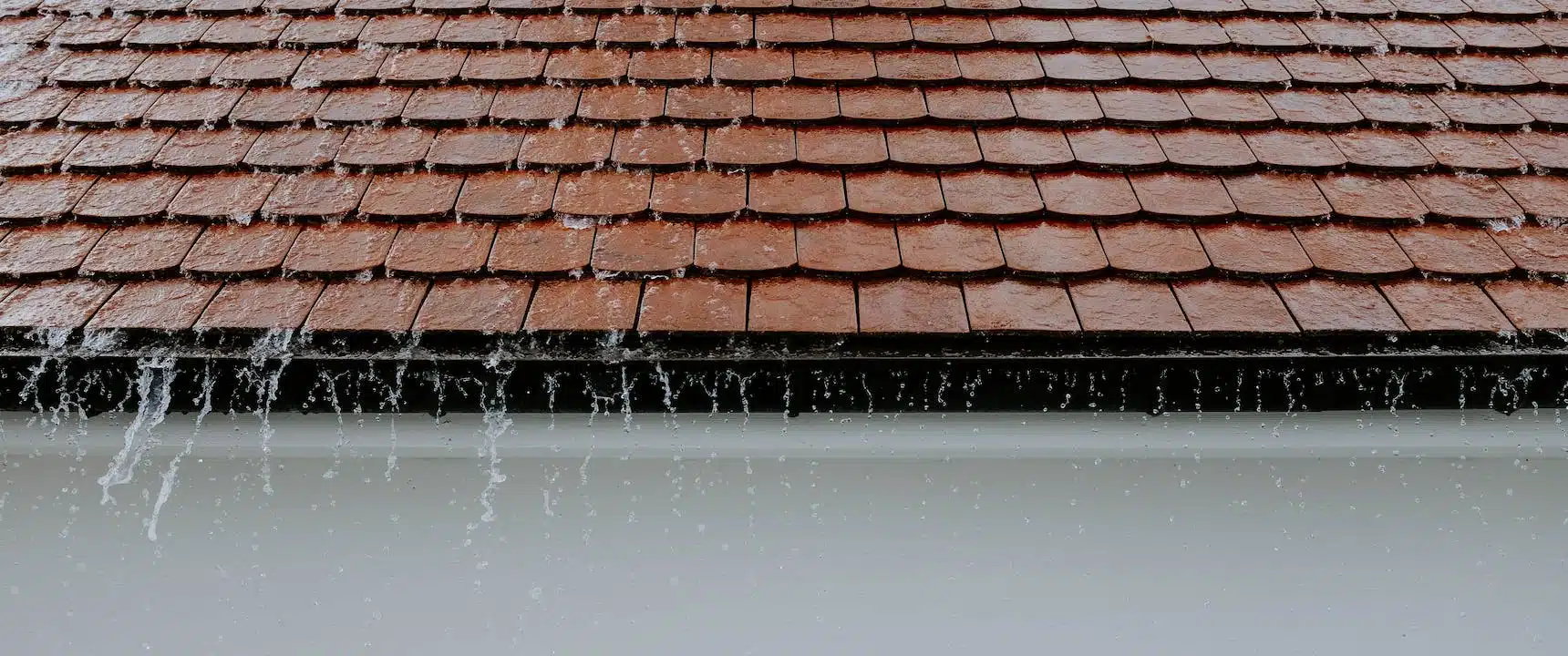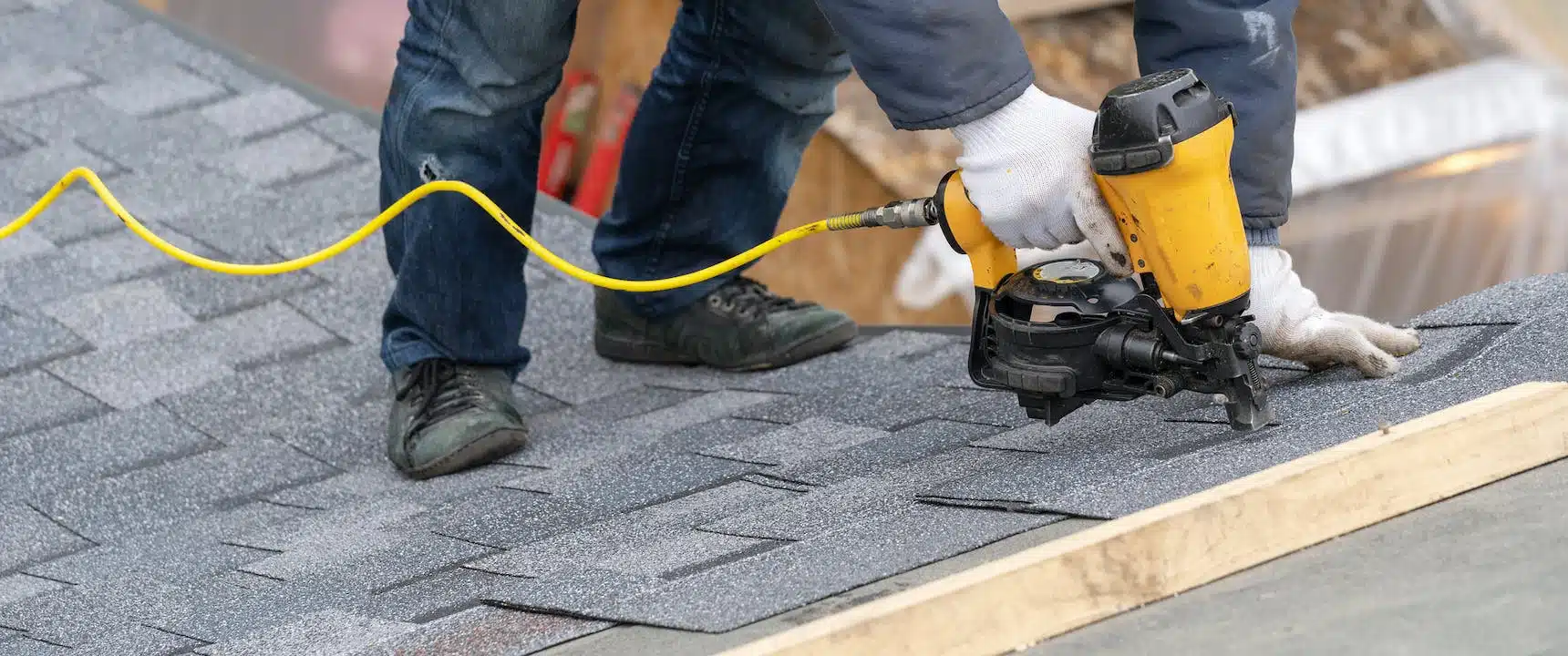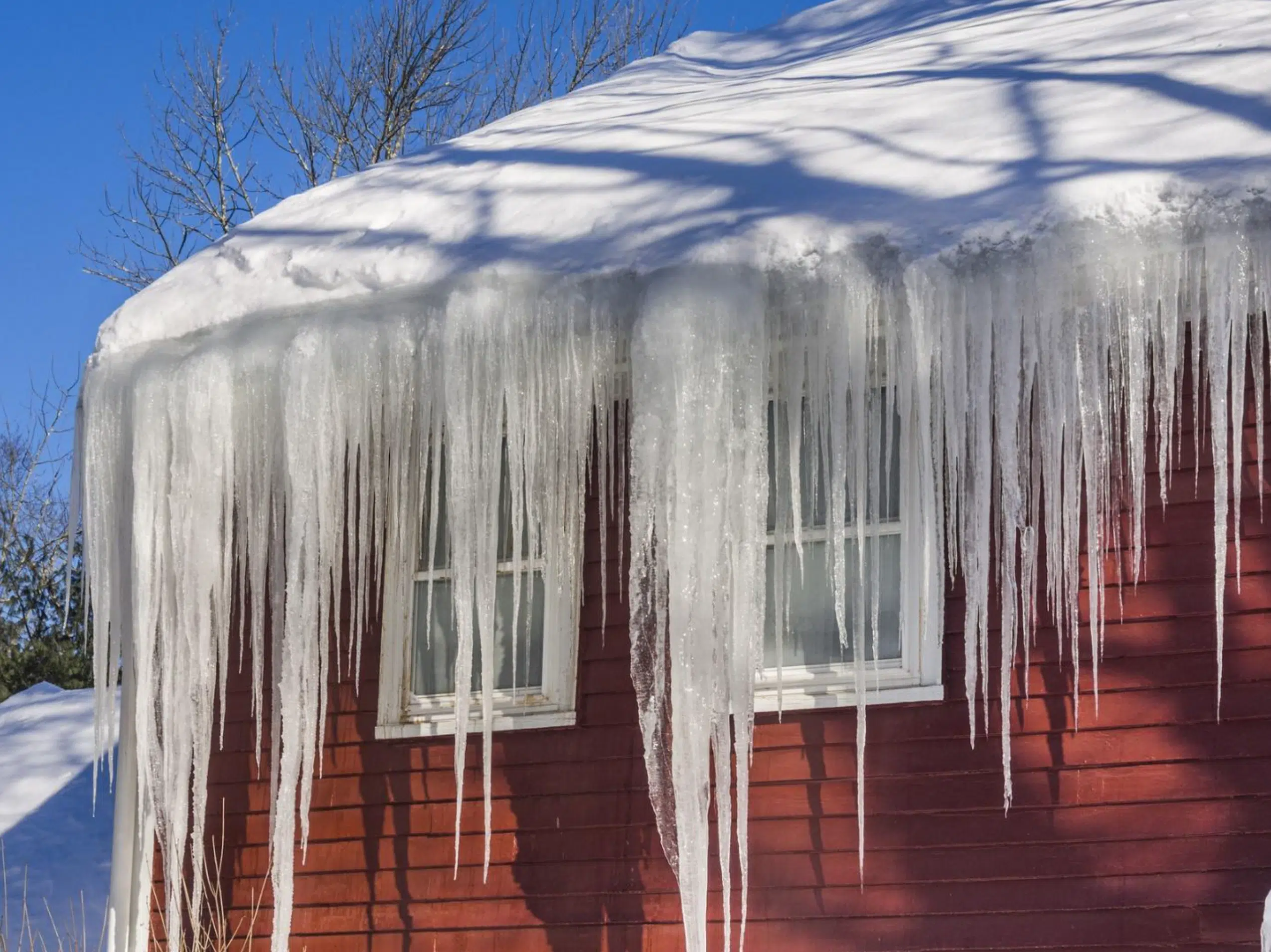
Between 2010 and 2013, approximately 48% of confirmed tornadoes touched down in April and May and were responsible for more …

Leaking roofs are every homeowner’s nightmare, but it doesn’t have to be as bad as the worst-case scenario you may have conjured up in your mind.
By taking some basic first steps to quell the leak followed up by professional assistance, you’ll be on your way to never having to worry about the leak again.
Read on for everything you need to know and do if you discover a leak in your roof, including:
Let’s get started.
Roofs, though intended to provide shelter and keep us dry, are susceptible to damage, especially as they age under the intense sun and heat of Austin. If there’s a strong storm with wind or hail, the damage can happen even more quickly.
If you notice a leak in your Austin home, the first thing you should do is try to contain it – and yes, this means grabbing a bucket.
Most roof leaks make their presence known during a storm, even if the roof has been vulnerable for quite some time. Without rain, you likely won’t know about the issue unless you are actively looking for roof damage.
Whether big or small, what happens when your roof leaks is that water is simply following the path of least resistance. With the downward force of gravity and even the tiniest of openings, that path of least resistance may lead straight into your home…
Roof leaks should always be fixed as quickly as possible. The damage will not fix itself and in fact it will only get worse. But you may be wondering exactly how long you have before severe damage begins to set in. A day? A week? A month?
The answer will depend on your given situation, the extent of the damage and the type of materials you have, among other variables. One thing is certain, however, and that’s the longer you wait, the more damage you’ll have. And more damage nearly always means more expense.
One of the biggest byproducts of a leaking roof is rapid mold growth throughout your home. Mold only needs 24 hours to begin actively munching on your walls, ceiling and floors. If it gets into your HVAC unit, it can begin circulating throughout your entire home.
Additionally, if water finds its way into your Austin home and doesn’t have an escape route to drain away, it will pool up and get bigger… and bigger… and bigger. The larger the pool of water, the heavier it will be. If it happens to be pooling above your ceiling, eventually that weight will be too much for it to bear and your ceiling could collapse.
Because of these dangers, leaks need to be addressed right away, even if it is to apply a temporary patch. Sometimes a roofer cannot come to your home right away and you need to perform triage in order to stay afloat until they do arrive.
Moreover, we know that even a small leak can lead to expensive damage, so it’s also a good idea to contact your insurance company if you intend to file a claim. Be sure also to take some pictures and video footage of the damage so you have a record of the event.
Next you should do what you can to temporarily stop the roof leak.
Before doing any roof repairs or patches, however, it’s worth reminding you to always be careful when accessing your roof, especially during storm situations. Being that high off the ground comes with risks, especially on steeply graded roofs. Get help if you need it, even if it’s just to apply a temporary fix.
Here are some patching options you can use to tide you over until a professional arrives onsite:
Roof leaks are the nightmare no one wants to wake up to, but if you do find a leak, know that it can be fixed – and it can be fixed without the expense of replacing your entire roof.
Most roof repairs are in direct response to a damaging event or storm, in which case they need to be addressed as soon as possible. An emergency roofing situation in one in which the leak or damage affects the daily living routines of the home. If you have a leaking roof emergency, call us right away at 512-960-4090. Then do what you can to contain the leak and clear the affected area of any valuables that could become further damaged by water.
A roof leak is never a welcomed expense, so when you’re faced with a repair situation, you want to know upfront what you can expect it to cost. As with any kind of service, the cost will depend on the type of repair needed, the roofing materials involved, and how severe the roof damage was.
While some people may be tempted to hold off on making minor repairs to avoid the immediate cost, we caution you to avoid taking this approach. Saving $500 today could mean you end up having to pay $5,000 down the road – all for a situation that could have been avoided.
Below is a breakdown of the costs you can expect for average roof repairs here in the Central Texas area. For an estimate based on your specific situation, contact us to schedule a roof evaluation.
Most roof repairs take only a few days to complete, and sometimes even less time depending on the severity of the issue. Storm season is naturally the busiest time of year for professional roofing companies as our schedules are often full tending to roofing emergencies.
To ensure greater availability of an experienced roofer in Austin, it can be smart to repair roof leaks during these “off-peak” times. Late winter and early spring can be good months to repair or replace your roof in Texas, as there are fewer severe storms and therefore less emergency demand.
If your roof is damaged, you may be faced with the option of repairing the issue or replacing the entire roof.
A full-on roof replacement is a significant investment, and most homeowners want to make sure the investment they make will pay off, regardless if they’re quantifying that value in dollars and cents or some other intangible value.
So, how much does the value of your home increase with a new roof?
Strictly speaking money, a new roof will increase your home’s resale value by a national average of $17,000, according to data from Remodeling’s 2021 Cost Versus Value Report.
Closer to home, the average cost of a roof replacement with asphalt shingles for the West South Central region of the U.S. (including Texas, Oklahoma, Arkansas and Louisiana) is $25,265. This investment boosts a home’s resale value by an average of $14,230, which means you can expect to recoup about 56 percent of the investment cost.
While these numbers tell one story, if you’re in the market to sell, there are some other factors to consider when evaluating the value of a roof replacement:
A new roof adds immediate value to your home, and if you’re in the market to sell, an upgraded roof can offer added appeal to prospective buyers.
Roof repairs and roof replacements may not be the most glamorous upgrades we want to spend our money on, but a strong and secure roof over our heads is important to protecting our families and keeping them safe and dry.
If you’re concerned about a leaky roof or experience a roofing emergency, the best thing you can do is call a roofing professional right away to have it evaluated.
At Storm Guard of SW Austin, our priority is to keep you safe while protecting your home and roof for the long haul. For questions or immediate roofing assistance, get in touch.

Between 2010 and 2013, approximately 48% of confirmed tornadoes touched down in April and May and were responsible for more …

Homeowners throughout the greater Colorado Springs area are upgrading to a Class 4 shingle. The question we get asked most …

The changing of seasons can bring welcomed cooler temperatures to the heat-filled days (and nights) of summer in Austin. We …

Even the most durable and weather-resistant roofing products won’t last forever in a climate like ours here in Central Texas. …

What is an Ice Dam & Where Do They Occur? An ice dam is a substantial ice formation that has …

There are numerous roofing materials on the market, and, much to the chagrin of homeowners, not all perform quite as …